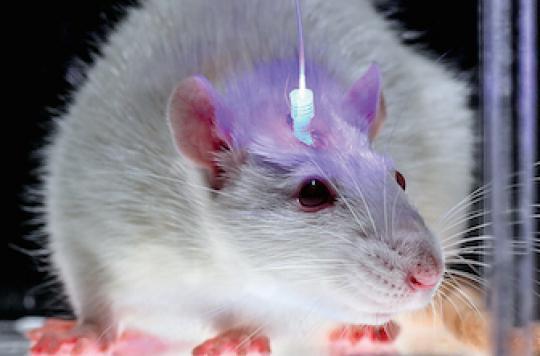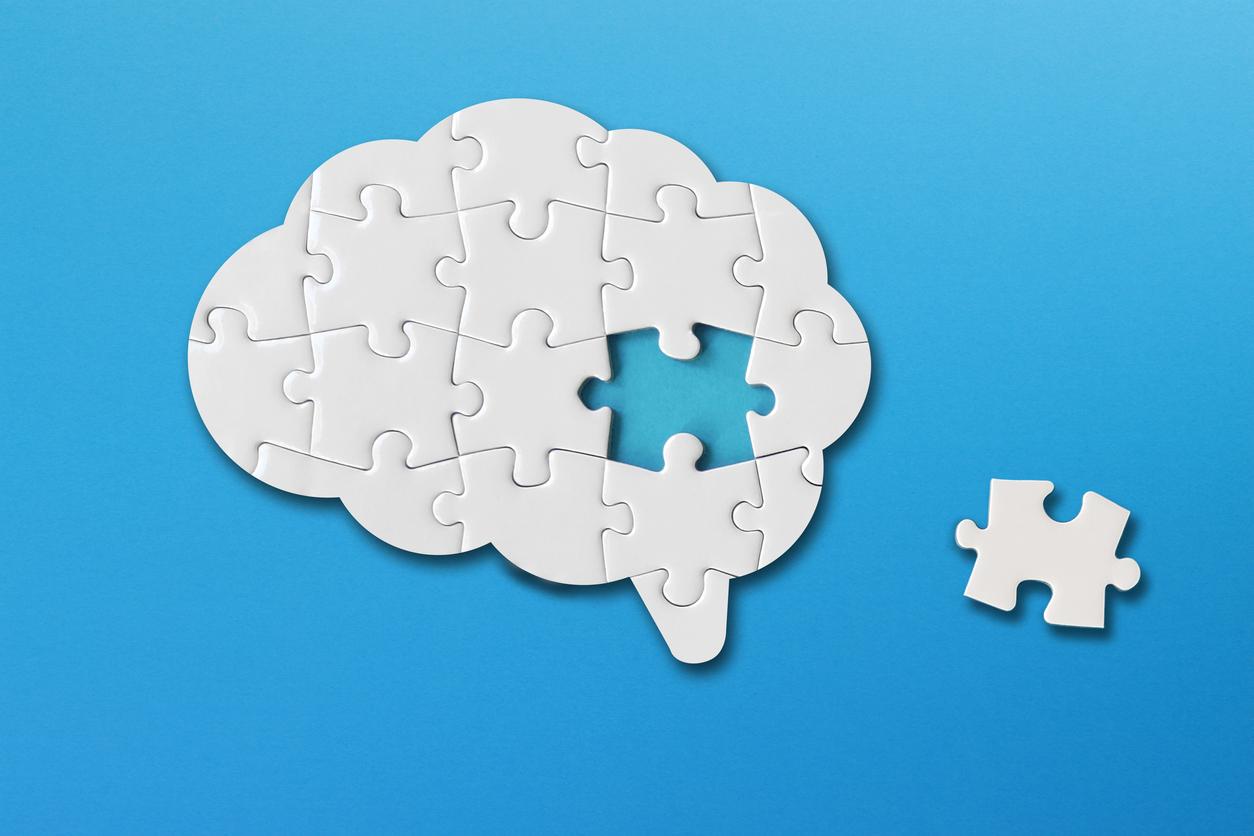Brain waves are altered in Alzheimer’s patients. Restoring normal electrical activity in the neurons would be beneficial.

Light against Alzheimer’s! It is not a question of resorting to light therapy but to a more recent and more complex approach: optogenetics. This technique consists of modifying the activity of neurons using blue light directly connected to the brain. And restoring normal electrical activity could prove effective in Alzheimer’s disease, according to a study published in Nature. Conducted by the Massachusetts Institute of Technology (United States) and on mice, it shows that the beta-amyloid protein – the main marker of pathology – is linked to a precise frequency of waves in the brain, gamma waves.
disturbed brain activity
The animals used for this work have been modified to express signs similar to human Alzheimer’s. In their brain, beta-amyloid proteins gradually accumulate. Toxic to neuronal cells, they increasingly affect the functioning of the organ. This characteristic prompted the authors of this study to take an interest in a specific phenomenon: the electrical activity of neurons. More specifically gamma waves, involved in the processes of learning and creation.
In the normal state, the neural networks act in a synchronized way, causing electrical waves. Those named gamma correspond to a range of 25 to 65 Hertz. Previous work has shown that in Alzheimer’s disease, these waves are disrupted. Analysis of the neuronal activity of the mice confirmed this: a decay of gamma waves occurs before the accumulation of beta-amyloid proteins, which then aggregate in the form of plaques.

24 hours of efficiency
This anomaly attested, the MIT team tried to correct it. To do this, they used optogenetics (see box). The light is directed directly towards the hippocampus, a key area of the brain for memorization. This first test is a success: the gamma waves return to normal and the cerebral immune system resumes its cleaning activity.
But optogenetics is far too invasive to consider an application in humans. Researchers therefore set out to find an alternative. This comes in the form of LEDs assembled in a strip, which will form an external stimulus by flashing at the desired frequency.
A first group of mice underwent the tests. Beta-amyloid is present in excess, but does not yet form aggregates. One hour of LED exposure is enough to halve protein levels. But after a day, they return to their initial level.
A big “if”
The second group of mice shows more severe symptoms: beta-amyloid plaques have formed in the brain. They were therefore exposed to LEDs for a week. At the end of the treatment, the plaques were reduced. Microglia, inflamed in Alzheimer’s patients, are functional again. These cells are responsible for ensuring the immunity of the brain. After the optogenetic session, not only do they no longer secrete toxic substances, but they also resume their role, and destroy beta-amyloid.
That sounds promising for the millions of patients who suffer from the condition. “If humans react to the treatment the same way as mice, I would say that its potential is enormous”, estimates Li-Huei Tsai, who signs the study. But that’s a big “if,” by his own admission. In fact, Alzheimer’s is very difficult to model and mice are far from being a perfect model, although it is the closest.
Optogenetics, an optical fiber in the brain
Optogenetics is a very recent field in research. It relies on rhodopsin-canal2, which is sensitive to blue light. This protein is introduced into neurons, which can then be activated. The light is brought using an optical fiber connected to the brain. It is then possible to act on the expression of neurons and modify certain behaviors. The technique is mostly used to identify neural networks. But practical applications are already envisaged. According to Inserm, people blinded by retinitis pigmentosa could regain their sight. Optogenetics would indeed reactivate the remaining but dormant retinal cells.
.

















